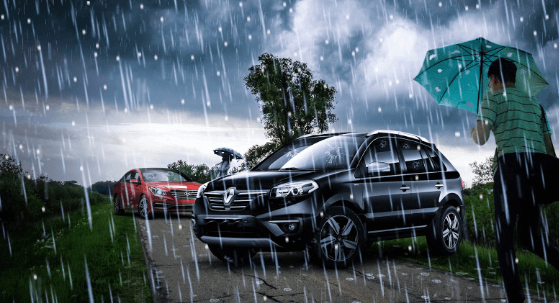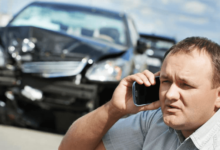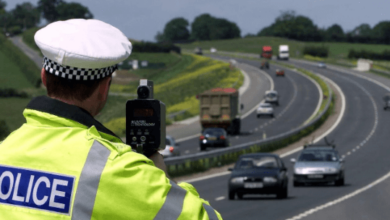Steps to Take if You Find Yourself Driving in a Hail Storm

A hailstorm is not that threatening when you are sipping coffee next to the fireplace in your living room. But it’s a different story if you are caught in the hail while driving.
Did you know hail can grow to the size of a bowling ball?
Yeah, that’s not something you want getting caught in. And when you’re on the road, you should be looking to get out of the storm with as little damage to yourself and the car as possible.
Generally, it is not a good idea to drive in hail, but you need to be prepared when it does happen. Here are steps to take when you are already on the road and the blackened skies descend:
Step 1: Check Your Driving
The presence of hail automatically requires you to adapt your driving to the conditions.
As you keep going, the hail hits your car with more force. So you want to reduce your speed and turn on the low beams.
You also want to stay extra vigilant since not all drivers understand the below crucial hailstorm lesson:
Do not tailgate at all costs and give yourself 3 to 4 times the normal distance with the next driver.
Sudden movements are just as dangerous.
Avoid stomping the gas pedal, late-breaking, or jerking your steering wheel. Make sure you are driving steadily and smoothly to avoid accidents. If you aquaplane, stop accelerating and maintain a straight steering wheel. Drive slowly to avoid sliding over the slippery road.
Step 2: Pay Attention to Other Road Users
While you are keen on other drivers’ mistakes, also take note of their positives. Keep in mind that the actions of other drivers can be a crucial indicator of what is ahead.
Truck drivers, for instance, park along the road or exit towards a gas station if the conditions are severe.
If you notice other drivers are pulling on the side of the road, you should probably do the same and not take it as an opportunity that there isn’t much traffic.
Remember, a hailstorm heavily affects visibility and sound. There’s little chance you’ll hear a vehicle honking at you or see another car careening into you.
Therefore, you should pay attention to what other road users are doing because the road might be risky ahead.
Step 3: Pull-Over
If your visibility is severely diminished or the road is slippery, then pull over on the shoulder of the road.
Make sure you angle the car such that it is out of the traffic lanes. The furthest you are from the road, the better, as other drivers have no clear vision either.
You also want to switch on your hazards and headlights to warn other drivers. The last thing you want is to be responsible for a crash. If other drivers ram into you, you have grounds to take legal action. JT Legal Group can guide you through the steps you’d want to take.
Now, when protecting your vehicle from the hail, try angling your car in a way that your windshield stands a better chance of surviving the storm.
Take note and avoid low-lying areas where water can quickly accumulate, trapping your car or worse, be carried by flash floods.
Also, when pulling over, avoid parking next to trees and power lines. These are dangerous spots to park if they fall.
Step 4: Stay safe in the car
Heavy, fast-moving hail can dent metal, so there are high chances you can be severely injured.
Stay in the car, avoid the windows and lie down, taking cover next to the seats and metal body. If you have bags, fabric pillows, or heavy blankets, reinforce the windows and cover yourself.
You can also recline the seats to avoid the windows. Any cotton inside the car is invaluable protection against flying glass in case of hail breaches.
Step 5: Deal with the Damage
If your windows get broken in the storm, you may want to postpone your journey. It’s dangerous to keep going if the hail hasn’t passed.
Moreover, there are legal ramifications to driving with damaged windows.
It’d be best to report any damage to your insurer as soon as possible. Take pictures of the damage when the storm calms to make it easy for your claim.
Take Away
Driving in a storm is never safe because it affects your visibility and the ability to control your vehicle.
When the storm is accompanied by hail, the threat level is increased. Always prioritize safety before anything else.








